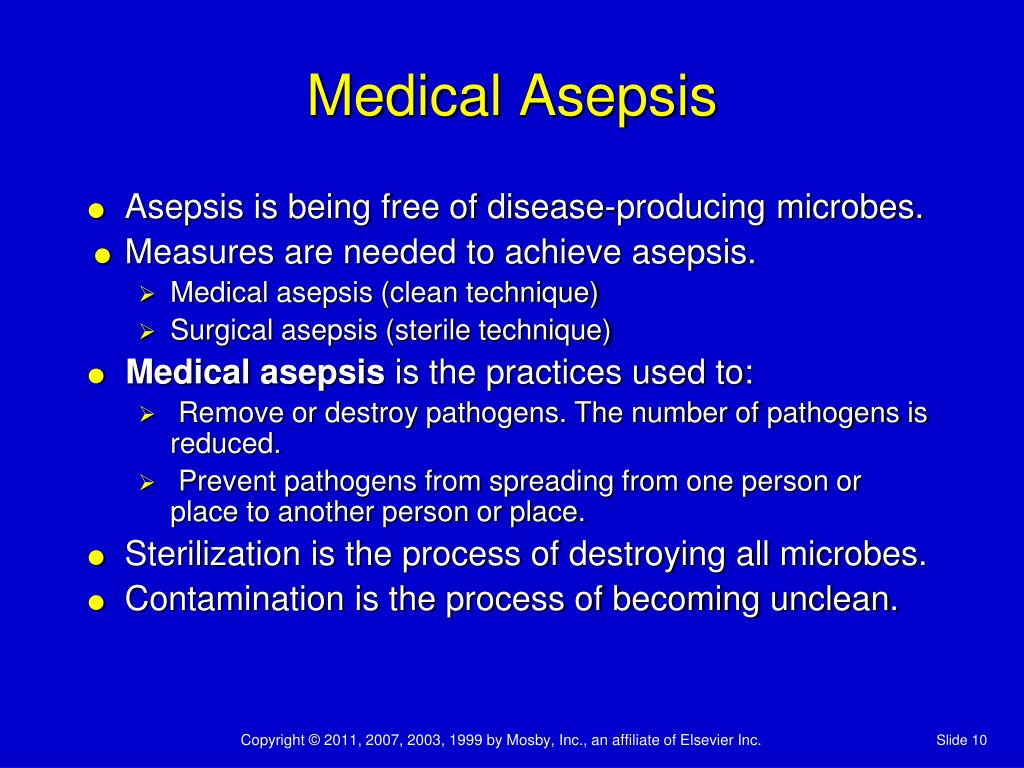

Surgical asepsis is the removal and prevention of microbes during a surgical or other invasive procedure. Medical asepsis is the removal and prevention of microbial contamination in a healthcare setting. Difference between Medical and Surgical asepsis? Definition Surgery is expensive and some of the cost is due to having to maintain high conditions of asepsis. It takes more time to prepare for a surgery due to the needed precautions and sterilization methods that have to be carefully adhered to.

It reduces healing time and decreases hospital-acquired infections by decreasing the likelihood of microbes entering the body from the external environment. Surgical asepsis is important to prevent infection occurring due to invasive procedures, including the placing of catheters.
Differentiate between medical and surgical asepsis skin#
The patient’s skin is also sterilized using various chemical agents, and the patient is draped and only the relevant areas of skin are exposed. Some equipment that is used in an operating room can be sterilized using a steam autoclave. Any instruments dropped on the floor cannot be used again due to becoming unsterile. Surgeons have to carefully prepare by careful washing of the hands and then wearing PPE that includes gloves and surgical masks. In surgery, everything above the waist is considered a sterile environment while everything below the waste is considered to be a not sterile environment. Usually prepacked sterile instruments are used that can be opened in the operating room, used during the surgical procedure, and then discarded.

It is very important that sterile instruments and equipment are used, especially during invasive procedures where it is easy for microbes to gain access to the body. An invasive procedure is any procedure in which entry is made into the body, for instance, placing a catheter or intubating a patient before surgery. Surgical asepsis are techniques to ensure the absence of pathogenic and other, potentially harmful microbes during an invasive procedure such as surgery. It does cost money and time to perform medical asepsis, and hospitals have to budget for gowns, gloves, face masks, and cleaning and sanitizing supplies. This helps stop people becoming sicker and potentially dying in the hospital. The advantage of medical asepsis is that it helps reduce the incidence of nosocomial infections, which are those infections caught in a hospital or other healthcare facility. With Covid-19, it is now common for medical professionals in hospitals to also wear gowns and face masks in addition to gloves and to place Covid-19 patients in isolation units to further reduce the transmission of the virus. Beds in hospitals also need linens changed regularly. Medical asepsis techniques include frequent handwashing, using gloves and changing gloves often, cleaning and sterilizing medical equipment, and sanitizing surfaces. Medical asepsis is the technique that is implemented in order to prevent contagion among patients and to rid a healthcare facility of any pathogenic organisms, such as bacteria and viruses that spread disease from person to person.


 0 kommentar(er)
0 kommentar(er)
